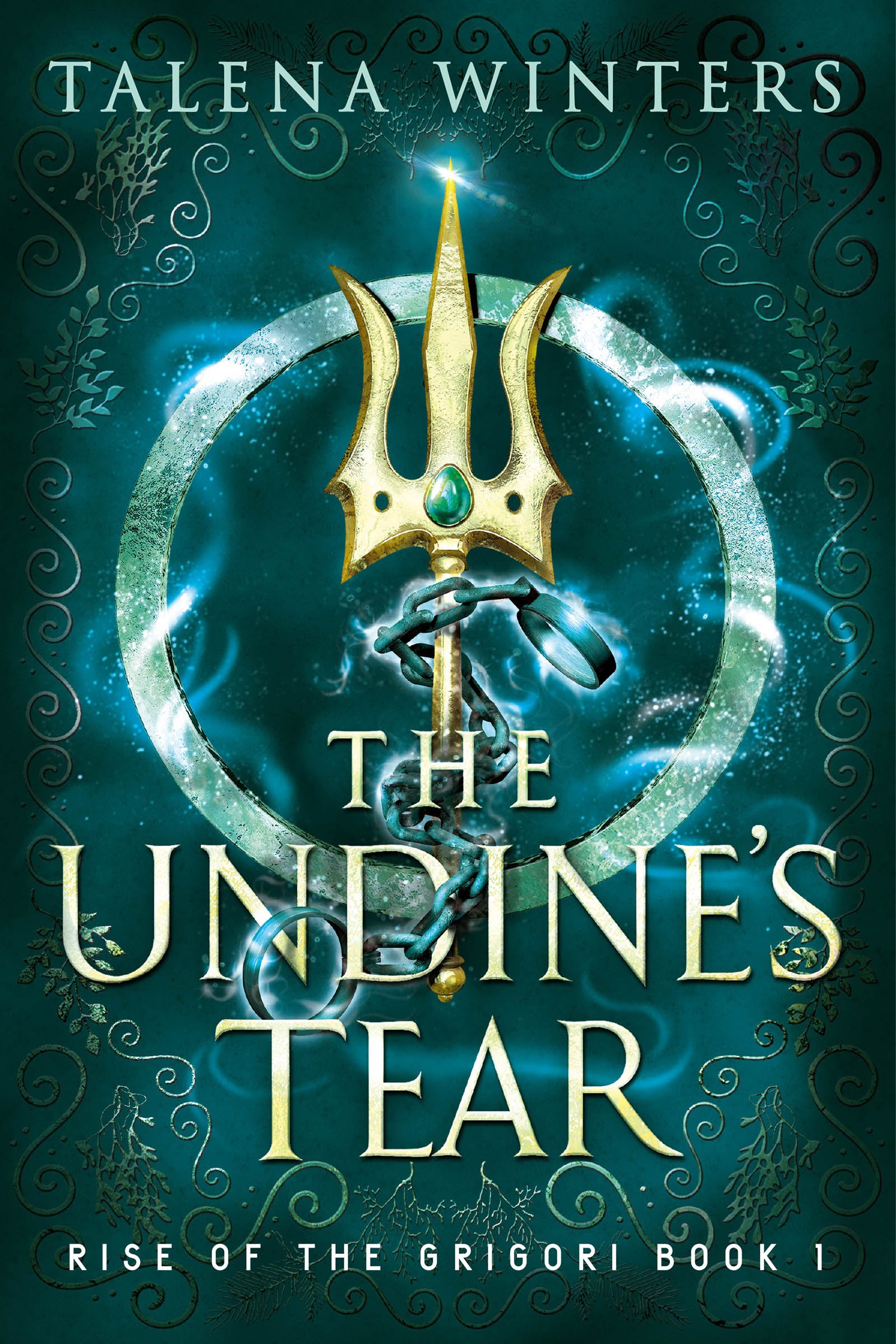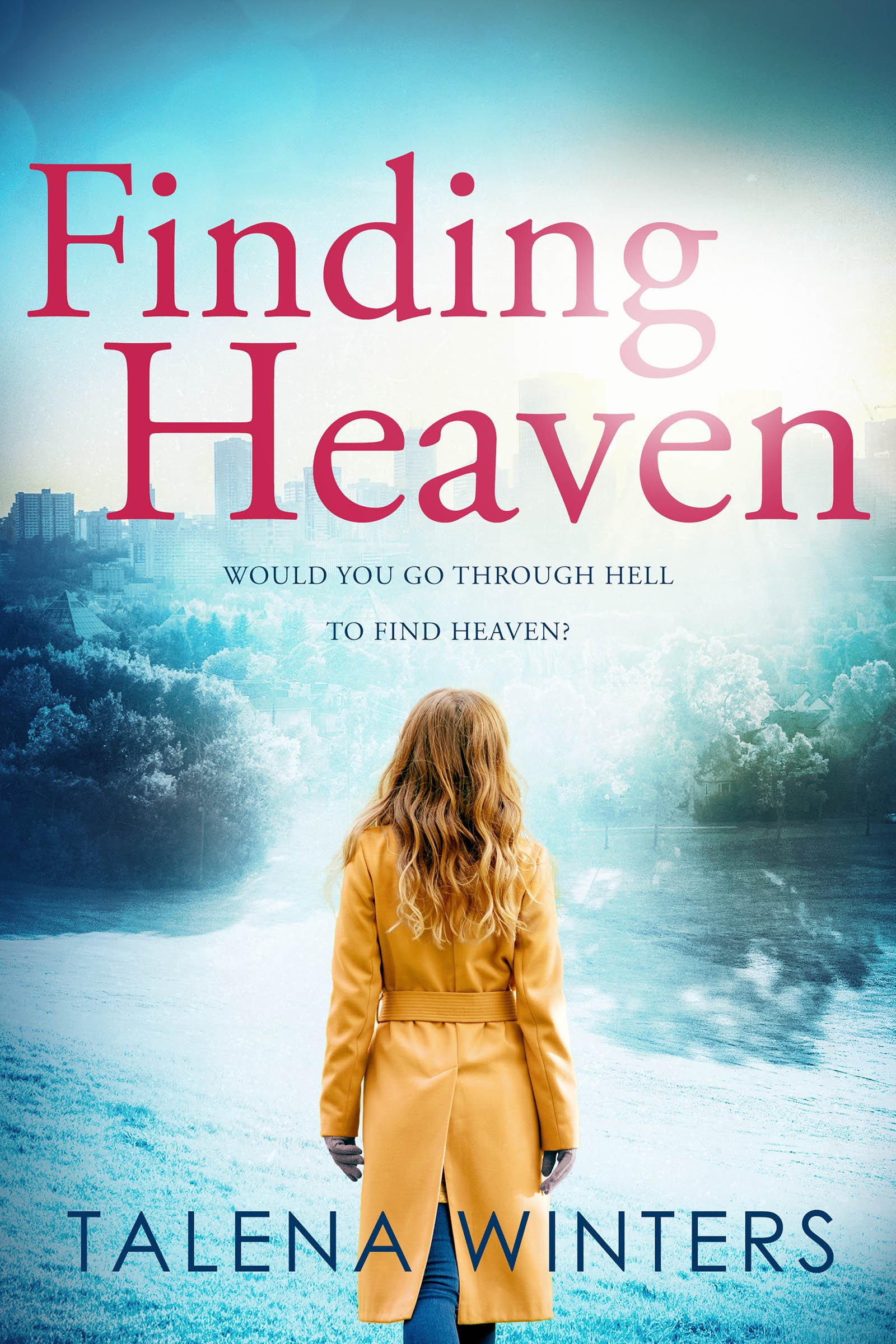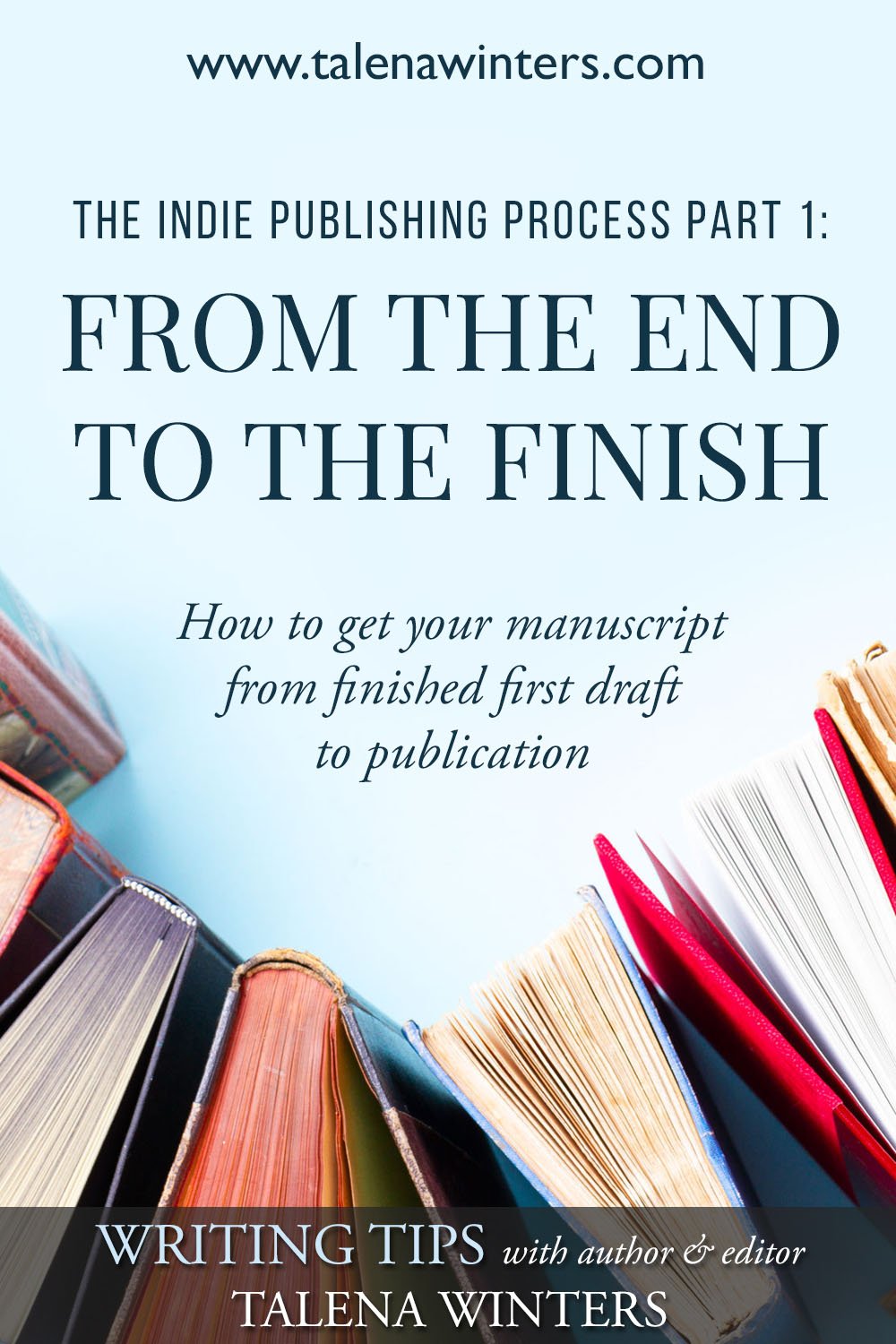The Indie Publishing Process 2: Publishing and Distribution
In my last post, I gave an overview of the process an indie author needs to plan for to get their book from “The End” to being ready to publish. It was a lot, right?
Most new authors are surprised at how much work still remains after you get your first draft done, and I was no exception. Not only is there the revision, the editing, the revision, the art directing for the cover and interior design—and did I mention the revision?—but once that’s all done, you now have even more things to decide.
Today, we’re going to talk about a few of the options you now have to choose between regarding how to get your book out into the world where other people can buy it. (Actually, some of what is in this post needs to be decided before hiring your graphic designer and cover. I’m keeping this series topical, not necessarily in exact chronological order.)
A brief guide for getting your book from “The End” to hitting “publish.”
I say “a few,” because in today’s industry, the options are vast. I will try to touch on everything, but can’t hope to go in-depth on anything in a short blog post. For a post that gives you insight into both traditional and indie publishing routes, I recommend this excellent post from Jane Friedman about the Paths to Publishing.
I will be speaking to authors who plan to self-publish, or are trying to decide if they should. This post will not compare the process of traditional publishing with indie publishing, because frankly, my dear, if you’ve gotten this far, you’re probably on the self-publishing track. I’ll save the pros and cons of each type of publishing for a future post.
Your first question to answer when deciding how to publish is:
How Will I Distribute My Book?
EBooks
This is not where self-publishing began, but the ease of publishing an eBook on platforms like Amazon and Kobo is certainly why self-published books exploded in the marketplace. I’ll save the discussion about whether this ease-of-access and lack of gatekeepers was a benefit for book lovers for another day.
For today, let me say that there are still authors that have had very good starts to their careers using only eBooks, and still do. In fact, it is so ridiculously easy and inexpensive to publish your own eBook, I can’t think of a self-published author who intends to make a career out of writing who would ignore this potential source of income. Unless you are creating a photo book or children’s book, it should be a no-brainer. (And even then, look into it.)
You especially want to tap into this market if you write fiction in the genres of romance, thriller, or mystery. Readers in these genres tend to be voracious, and the cheaper price tag on and ease-of-access to digital books makes them avid eBook customers.
EBooks can be made professionally, and if either your tech skills or patience are somewhat anemic, I’d recommend going this route. However, if you have the time and desire to learn, you can create very clean, beautiful eBooks using Word or Scrivener and online or free tools. (The “how” is beyond the scope of this article, so Google is your friend. Note that Reedsy has a free online tool for writing and typesetting eBooks which some authors enjoy. Disclaimer: I haven’t used it myself.)
Ebooks can usually be directly uploaded to eBook publishing platforms, of which there are a wide range, each with their own benefits and drawbacks. Again, this is something you’ll want to research. Know what it is you want to accomplish. Ask other writers what they use, what they like or don’t like about services they’ve used, and why. Different platforms may be right for different points in your career. Your writing business isn’t a one-and-done thing. Choose one to start with, and as you get comfortable with that, expand from there.
Once you have the file in the appropriate formats for the distribution service you plan to use, you simply follow the steps on the platform. The help files and support teams of your chosen distribution partner can walk you through that.
But wait! They’re asking me for things like keywords, categories, imprints, and ISBNs! What’s that about?
An ISBN is simply the unique identifying number (usually accompanied by a bar code on the back of a book) that is assigned to your title. You need one for each format of your book (e.g. ebook, paperback, hardcover, audiobook, etc.).
In the USA, they are distributed by Bowker and are expensive, so many people opt for the free ISBN Amazon provides, though I don’t recommend that—you can’t use Amazon’s ISBN on other platforms, and you shouldn’t ignore other platforms. It’s bad business to put all your eggs in one basket, and the publishing world is still much bigger than Amazon. Thankfully.
In other countries, you’ll have to do your research. In Canada, they are available for free through Library and Archives Canada (LAC) and are ridiculously easy to get. (I recently discovered that Singapore also provides free ISBNs. Do your research for your own location.)
An imprint is the publishing name you want to use. This can be your own name, or you can register your own imprint easily enough, though it may cost you something. In Canada, you can register an imprint name as a Trade Name (“doing business as”) at your local registries office for around fifty bucks, if my memory serves.
You then use that to register for your ISBN account with LAC, and also when you load your book with a distributor. Publishing imprints are listed on sites like Amazon, so having one that isn’t your own name lends credibility to your book, even as a self-published author—if someone takes the time to register a business name, it tells me they are more likely to care about the quality of their book.
As for metadata like keywords and categories, we’ll talk about that when we get to marketing.
As awesome and easy as eBooks are to make, there are always going to be people who prefer holding a book in their hands, so that brings us to:
Paper Books
I highly recommend that indie authors not neglect paper books. While it costs more to create them, over 50% of all book sales are still paper. For me personally, I’d say that number is closer to 90% in my career so far.
This is where the indie publishing process can start to get, um, interesting. While creating a digital eBook file and uploading it might seem pretty non-threatening (or maybe not!), how does one go about creating a paper book?
Well, you could learn the art of bookbinding, print them off at home, and make them yourself (like Nick and Jess on New Girl)… but unless your book is an art piece that you maybe want five people to own, I wouldn’t recommend it. Though binding books was a lot of fun for Nick and Jess:
Nick and Jess get high on glue fumes while binding Nick’s book, The Pepperwood Chronicles, on New Girl.
But let’s assume, for now, you’d like to make a business of this. Here are some things to consider when you are deciding on all the things with regards to printing, publishing, and distributing your paper books. Some of the decisions are dependent on each other.
Offset Printing or Print on Demand?
Offset printing is a traditional method one often thinks of when you think of a printing press—an image transferred to paper from a plate. There’s a little more to it than that, but the advantages of offset printing are many, including the sky being the limit when it comes to binding styles, trim sizes, and cover details.
The disadvantage is that, unless you print runs of 500 or more (according to my recent research), you will not save money per unit over what you could get from a print-on-demand (POD) service like IngramSpark, Kindle Direct Publishing (KDP—formerly Createspace, Amazon’s POD arm), Lulu, or Bookvault—even in Canada, where we also pay for higher shipping and an exorbitant exchange rate to get them here.
Most new authors should or will opt for print on demand, and here’s why: with services like IngramSpark and KDP, you can set up your book to be printed for next to nothing (or nothing at all), have your book available around the world instantaneously, and when someone orders it, it will be printed and sent to them without you having to do another blessed thing in the process.
You don’t have to store books.
You don’t have to have a huge investment in stock just to get your book into the world (though you may end up with one anyway if you choose to, which we’ll talk about more in Marketing in my next post).
You don’t have to hire a storage and distribution company to handle all those books for you.
You just wait for your portion of the sale to be deposited into your bank account at the end of the pay period.
When your business gets to the point where you are moving a great deal of volume of each title in your catalogue, you may want to consider offset printing. By the time you need it, you’ll know you need it, trust me.
For now, do your research and find a POD service that works for you.
(You may want to use a combination of two or more POD and distribution platforms. Many authors do. It depends on your needs, what you’re willing to learn, and how long you’re willing to take to learn it. If you’re just starting out and want to keep it simple with one, I recommend IngramSpark over KDP based on their wider distribution, higher quality printing, and wider printing options. This is my opinion based on personal experience as an indie author. I have not tried other services. Others would disagree, which is why you need to do your own research.)
What Will My Book Look Like?
Your design options for your print book will be dependent, in part, on the printing solution you choose. As discussed above, offset printing means you can do anything you can afford to do. However, POD still gives you a wide range of options that will satisfy the needs of most self-published authors, especially for fiction titles.
Here are the decisions you need to make before you hire a graphic designer for the cover and a typesetter to format the interior of your book:
How Big Will It Be?
This is mostly determined by the length of your manuscript, but there are numerous things you can do to adjust your finished book’s weight or volume and still keep it within industry standards, including adjusting font faces, font sizes, margins, folio (page number) positions, trim sizes, and more. How much back matter you put in makes a difference.
As an example, the first book in my YA epic historical fantasy trilogy, The Undine’s Tear, and my previous book, a psychological women’s fiction called Finding Heaven, have very similar word counts, but by making different design choices, the sizes of the finished books were significantly different.
The Undine’s Tear was originally 164,000 words long, whereas Finding Heaven was only (!) 162,000.
The first time I designed these books, I had them both made in a 6 inch by 9 inch trim size but, through what I learned from marketing and selling Finding Heaven to bookstores and readers, I deliberately made design choices that allowed The Undine’s Tear to be 134 pages shorter in print form—less back matter, different margins and font faces, simpler line break ornaments, and more.
Why?
I didn’t want my YA readers to be intimidated by a huge, fat book. Plus, smaller books take up less space on the shelf, they are easier to hold for long periods while reading, and you can fit more of them in a carton when you are ordering. Maybe most importantly, they cost less to print, which means you can keep your retail price more competitive.
This is all stuff I wish I’d known before designing my first book. But now I do. And so do you.
(Edit on September 14, 2021: I later recovered both these books because I was still not meeting reader expectations for my genre, which affected sales. [New covers shown above.] When I did so, I also cut down the word count of The Undine’s Tear by 1,000 words, though the final book is almost exactly the same size. However, even though Finding Heaven is still 1,000 words longer, I had the interior redesigned to be only 14 pages longer in print. And that whole recovering and re-editing thing? That’s the beauty of being indie—if you make a mistake and learn better, then you can change it later. And you’ll be a smarter publisher going forward.)
What are the Genre Expectations for this book?
Some of the titles on my young adult shelf. I took this photo when trying to explain what kind of spine design I wanted to my cover designer.
This bleeds over into the marketing aspect of indie publishing. It is a question that your graphic designer and typesetter can help you answer, but nothing beats doing your own research. (When it comes to hiring professionals, remember that you are the art and marketing director and the final product is something you have to live with. So make sure you are happy with it.)
First, if you don’t read in your genre (and if you don’t, why are you writing in it?), go do some research in a physical bookstore. If you do, go to your own shelf. Also spend time tracking down current bestsellers in your genre on Amazon.
Look at things like common trim sizes, cover designs, fonts, margins, cover design trends, and even title trends. It’s not too late to change your title! (Also search your title on Goodreads and Amazon. Titles can’t be copyrighted and duplicate titles are common, but knowing how hard it will be for someone to find your book based only on your title is good information to have.)
If you can find hardcovers (and want to print your book in this format), how many of them use dust jacket wraparounds and how many use case laminate bindings in your genre?
Once you have the information in hand and have narrowed things down, ask your readers for their opinions. (If you don’t have “readers” yet, ask your social circle, but be sure you have people specify if they typically read this genre.) Some graphic designers will give you two or three mock-ups to look at before they get into the detail work, and you can ask your readers for their reactions to test which one grabs the most attention and tweak the design based on their feedback.
Remember, your book design is not only a package, but a marketing tool. Every decision you make at this point should be motivated by answering these two questions:
Will it grab the reader’s attention and help sell this book?
Will what they find in the content live up to the expectations set by the packaging?
Someone should be able to tell at a glance whether your book is in a genre they might like to read. Everything about the book design should reinforce that. And when they get to the content, it better live up to that promise.
“Your book design is not only a package, but a marketing tool.”
A Word About Vanity Presses and Hybrid Publishers:
Vanity press is the term for companies that package together services like editors, graphic designers, typesetters, and printing for inexperienced independent authors who may not want to learn those things themselves and have no intention of becoming career authors.
In general, they charge you a large fee (in the several thousands of dollars) with the promise to “publish” your book under their imprint, and often retain the “publishing rights” while forcing you to carry the entire burden of marketing, stocking, and distributing your book. Quality can vary—it may be excellent or poor, but since they have no investment in the success of your book, I’d lean towards poor.
These should not be confused with traditional publishing. If someone is asking you for money to publish your book, you are the actual publisher, even if they offer to put their brand on it. And buyer beware! These presses can serve a purpose, but they will not make your book a success—and often, they’ll leave you with a garage full of books that you’ll still have to figure out how to market. Often, these presses are outright predatory, preying on the newbie author with more money than experience or knowledge, offering promises they can in no way keep.
I would say that vanity presses are best suited for authors who do not want to make a business or career out of writing—they just want to see their name in print. (Thus the term “vanity press.”) If this is you, you still need to do your homework to find out if the press is legitimate and will actually do what they promise.
But!
If you are serious about making a career as an indie author, I am writing this post for you. And I don’t recommend you use a vanity press to reach your goals.
Hybrid publishers walk a middle ground between self-publishing and vanity press publishing. They bundle services into packages that authors pay for and, in return, do much or all of the work of turning your book idea into reality (sometimes even ghostwriting it for you). However, far from trying to make a quick buck off of your ignorance, they are more like partners in your success. They usually allow you to retain the rights and most or all of your royalties, use modern self-publishing business models such as print on demand distribution, and will often provide coaching and instruction along the way.
Quality can still vary, though. You really need to do your homework to make sure any company or service provider you’re considering working with is reputable.
How do you know if the company you’re considering is predatory or not? Well, it’s tough.
One way is to get connected with other authors in online or in-person groups, forums, and conferences and ask them about their experiences with a certain company.
You can also check the listings on the Writer Beware blog, run by the Science Fiction and Fantasy Writer’s Association, or the Self-Publishing Services Watchdog List run by the Alliance of Independent Authors. (Getting a membership in Alli isn’t a bad idea, either. They’re a fantastic resource for education and advocacy, and have lists of trusted and vetted partners you can look at to work with first.)
Pulling It All Together
You’ve decided on your format, your cover, your book design, and your printing and distribution solutions. You’ve taken the plunge and put your book out into the world, like sending your first baby off to college.
But not really. Your kid probably has the tools to do some stuff out in the world on their own. Your book is now just a title and cover in a sea of options, which means you need to tell people about it—a.k.a. marketing.
In reality, you should have started marketing this baby a long time ago. But that will be the subject of my next post.
Do you have any questions? Leave a comment below or drop me a line through my contact form.
Happy writing!
Talena Winters is a freelance developmental editor, independent author, magazine writer, and tea and silver lining addict. She specializes in helping struggling self-published fiction and memoir authors unlock their inner writing wizards and unleash story magic. See her editing services here.
Other posts in this series:
The Indie Publishing Process Part 1: From “The End” to the Finish
The Indie Publishing Process Part 3: Finding Your Ideal Reader (aka Marketing)
This page last updated 2024-09-05.










Do real writers need to write every day? I tackle this question in today's post to uncover what's myth and what's fact.